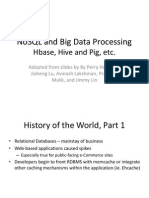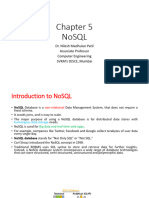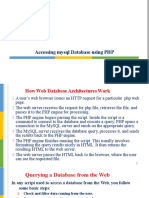0% found this document useful (0 votes)
61 views49 pagesBig Data Storage and Processing
The document discusses big data storage and processing. It covers topics like relational database management systems, primary keys, foreign keys, data warehouses, cloud storage, NoSQL databases, and the CAP theorem as it relates to distributed systems.
Uploaded by
Celina SawanCopyright
© © All Rights Reserved
We take content rights seriously. If you suspect this is your content, claim it here.
Available Formats
Download as PPTX, PDF, TXT or read online on Scribd
0% found this document useful (0 votes)
61 views49 pagesBig Data Storage and Processing
The document discusses big data storage and processing. It covers topics like relational database management systems, primary keys, foreign keys, data warehouses, cloud storage, NoSQL databases, and the CAP theorem as it relates to distributed systems.
Uploaded by
Celina SawanCopyright
© © All Rights Reserved
We take content rights seriously. If you suspect this is your content, claim it here.
Available Formats
Download as PPTX, PDF, TXT or read online on Scribd
/ 49





























































































